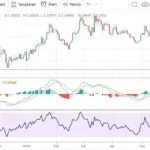Introduction
The Middle East is fast emerging as one of the most dynamic regions for financial technology. Once dominated by traditional banking systems, the region has witnessed an impressive surge in fintech innovation, driven by government-backed initiatives, youthful digital adoption, and a rapidly expanding startup ecosystem. From digital banking and payment platforms to blockchain-based solutions, the Middle East is positioning itself as a global fintech hub.
1. The Drivers of Fintech Growth
Several key factors have fueled the fintech boom across the Middle East:
a. Digital Transformation and Smart Vision Initiatives
Governments across the region — notably in the UAE, Saudi Arabia, and Bahrain — have launched national strategies to encourage digital transformation. Initiatives like Saudi Vision 2030, UAE’s Smart Dubai, and Bahrain Fintech Bay are examples of efforts to modernize financial infrastructure and create an enabling environment for startups.
b. Young, Tech-Savvy Population
Over 60% of the Middle East’s population is under 30 years old. This generation is highly connected, mobile-first, and open to alternative financial solutions. The demand for convenient, app-based financial services has fueled the rise of digital wallets, online lending, and neo-banks.
c. Supportive Regulatory Frameworks
Regulators have embraced sandbox environments to test fintech solutions safely. Countries like Bahrain and the UAE were among the first to launch regulatory sandboxes, allowing startups to experiment while ensuring consumer protection. Meanwhile, Saudi Arabia’s SAMA (Saudi Central Bank) has introduced fintech licenses to encourage innovation within controlled parameters.
2. Key Fintech Hubs in the Region
United Arab Emirates (UAE)
Dubai and Abu Dhabi are at the forefront of fintech growth in the region. The Dubai International Financial Centre (DIFC) and Abu Dhabi Global Market (ADGM) have become major hubs attracting startups from across the globe. The UAE’s fintech scene spans payments, digital banking, wealthtech, and blockchain — with firms like Tabby, YAP, and Mamo Pay leading the charge.
Saudi Arabia
Saudi Arabia’s fintech market has exploded in recent years, supported by Vision 2030 and the Fintech Saudi initiative. The Kingdom has seen a rapid rise in digital payments, with cashless transactions growing by more than 50% year-on-year. Startups like Tamara (buy-now-pay-later) and STC Pay (mobile wallet) are transforming how Saudis manage money.
Bahrain
Bahrain was an early adopter of fintech-friendly regulations, launching the Bahrain FinTech Bay and one of the first regulatory sandboxes in the region. Its focus on open banking, crypto regulation, and financial inclusion has made it a model for other Middle Eastern markets.
Egypt
North Africa’s largest fintech market, Egypt, is home to a growing ecosystem of digital payment and lending startups. With high smartphone penetration and low banking access, fintech is bridging financial inclusion gaps. Firms like Fawry, MoneyFellows, and Paymob are expanding rapidly, supported by Central Bank initiatives.
3. Emerging Trends in Middle Eastern Fintech
a. Digital Payments Dominate
Digital wallets, peer-to-peer transfers, and contactless payments continue to lead fintech growth. The pandemic accelerated the adoption of cashless transactions, and this trend shows no sign of slowing down.
b. Rise of Islamic Fintech
As the region’s economies are rooted in Islamic finance principles, Sharia-compliant fintech products are gaining popularity. Startups offering ethical investment, savings, and lending solutions are carving out a strong niche market.
c. Open Banking and API Innovation
Countries like Bahrain and Saudi Arabia are pioneering open banking frameworks, allowing customers to securely share financial data with third parties. This move is creating a new generation of data-driven services and personalized financial experiences.
d. Blockchain and Digital Assets
The Middle East is also investing heavily in blockchain innovation. Dubai’s Virtual Asset Regulatory Authority (VARA) and Abu Dhabi’s blockchain initiatives are attracting global crypto firms while fostering local blockchain startups.
4. Challenges and Opportunities Ahead
While fintech growth in the Middle East is impressive, several challenges persist:
- Regulatory fragmentation between countries can make regional expansion difficult.
- Limited access to venture funding for early-stage startups compared to Western markets.
- Talent shortages in specialized areas such as cybersecurity and data analytics.
However, opportunities abound. Governments are actively investing in education, digital infrastructure, and public-private collaborations. As foreign investors show growing confidence in the region’s potential, fintech valuations and M&A activities are expected to rise.
Conclusion
The Middle East’s fintech landscape is at an exciting crossroads — merging innovation, cultural values, and government ambition. From cashless societies in the Gulf to financial inclusion in North Africa, the region is rewriting the rules of finance. As digital adoption deepens and cross-border collaboration grows, the Middle East is poised not just to follow global fintech trends but to lead them














